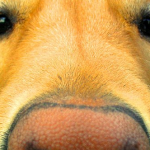 Crime
Crime  Crime
Crime  Humans
Humans 10 Unsung Figures Behind Some of History’s Most Famous Journeys
 Animals
Animals 10 Species That Refused to Go Extinct
 Weird Stuff
Weird Stuff 10 Weird Things People Used to Do at New Year’s
 Our World
Our World 10 Archaeological Discoveries of 2025 That Refined History
 Weird Stuff
Weird Stuff 10 Fascinating Facts You Might Not Know About Snow
 Miscellaneous
Miscellaneous Top 10 Things Crypto Was Supposed to Change & What Actually Did
 History
History 10 Huge Historical Events That Happened on Christmas Eve
 Music
Music 10 Surprising Origin Stories of Your Favorite Holiday Songs
 History
History 10 Less Than Jolly Events That Occurred on December 25
 Crime
Crime 10 Dark Details of Australia’s Gruesome Unsolved Wanda Murders
 Humans
Humans 10 Unsung Figures Behind Some of History’s Most Famous Journeys
 Animals
Animals 10 Species That Refused to Go Extinct
Who's Behind Listverse?

Jamie Frater
Head Editor
Jamie founded Listverse due to an insatiable desire to share fascinating, obscure, and bizarre facts. He has been a guest speaker on numerous national radio and television stations and is a five time published author.
More About Us Weird Stuff
Weird Stuff 10 Weird Things People Used to Do at New Year’s
 Our World
Our World 10 Archaeological Discoveries of 2025 That Refined History
 Weird Stuff
Weird Stuff 10 Fascinating Facts You Might Not Know About Snow
 Miscellaneous
Miscellaneous Top 10 Things Crypto Was Supposed to Change & What Actually Did
 History
History 10 Huge Historical Events That Happened on Christmas Eve
 Music
Music 10 Surprising Origin Stories of Your Favorite Holiday Songs
 History
History 10 Less Than Jolly Events That Occurred on December 25
10 Popular Misconceptions about Dogs
Dogs have been loyal companions to humans for thousands of years. They’ve earned their place as “man’s best friend” through their unwavering loyalty, intelligence, and ability to adapt to human life. But despite our deep connection with these wonderful animals, many misconceptions still circulate about them. Some of these misunderstandings can affect how we care for our dogs, from what we feed them to how we interpret their behavior. These myths persist even though science and animal experts have debunked them time and time again.
Understanding the truth behind these misconceptions not only improves the lives of our furry friends but also deepens the bond we share with them. In this list, we’ll clear up some of the most common myths about dogs, from diet to behavior, so you can be better informed and give your dog the best care possible. Here are ten popular misconceptions about dogs that need debunking:
Related: 10 Dogs Who Detected Cancer in Their Owners Before Doctors Did
10 If I Can Eat It, My Dog Can
One of the most widespread misconceptions about dogs is that they can safely eat whatever humans can. Unfortunately, this is far from the truth. Certain human foods can be toxic to dogs, sometimes leading to severe health problems. For example, avocados contain persin, a substance toxic to dogs, potentially causing vomiting, diarrhea, and even heart damage. Onions and garlic, common in many dishes, contain compounds that can lead to red blood cell damage in dogs, causing anemia. Even small amounts can be harmful.
Additionally, foods like chocolate, grapes, and cherries pose significant risks. Cherries contain cyanide, which can cause respiratory failure in dogs if consumed in large amounts. While the temptation to share your meal with your furry companion is strong, it’s crucial to know what’s safe and what could cause harm. Always consult with a vet or research thoroughly before introducing new foods to your dog’s diet.[1]
9 A Dog’s Vision Is Black and White
A common belief is that dogs see the world in black and white, but this is not entirely true. While dogs don’t perceive color as vividly as humans, their vision is not devoid of color. Dogs have fewer cone receptors in their eyes, meaning they see a limited color spectrum, primarily shades of blue and yellow. This was confirmed in studies where dogs were trained to distinguish colors and rewarded when they correctly identified the hues.
Researchers observed that dogs could differentiate between shades of blue and yellow but struggled with reds and greens, which often appear gray to them. While their vision may seem limited compared to ours, dogs make up for it with excellent night vision and a keen ability to detect motion. Understanding how your dog sees the world can help in selecting toys and designing environments that cater to their perception of color.[2]
8 Dog Aggression Is Determined by Breed
There’s a widespread myth that certain dog breeds, like Rottweilers or pit bulls, are inherently aggressive. While these breeds may have traits that make them more physically imposing, aggression in dogs is largely determined by their environment, upbringing, and individual experiences, not their breed. A poorly trained or mistreated dog of any breed can develop aggressive tendencies. In fact, many small breeds, like Chihuahuas, are known to be quite feisty.
Breed stereotypes often lead to misunderstandings and mistreatment, resulting in certain dogs being unfairly labeled as dangerous. Aggression is a complex behavior that is influenced by factors like training, socialization, and the dog’s past experiences. Instead of focusing on breed, it’s important to assess each dog as an individual, understanding that with the right training and care, any dog can be a gentle and loving companion.[3]
7 Tail Wagging Indicates Happiness
A wagging tail is often seen as a universal sign that a dog is happy, but this interpretation oversimplifies canine body language. While dogs do wag their tails when they’re excited or happy, tail wagging can also signal other emotions, such as anxiety or aggression. The key to understanding a dog’s emotions lies in the position and movement of the tail. For example, a tail wagging high and stiffly might indicate alertness or dominance, while a low, slow wag could suggest fear or insecurity.
In some cases, a dog wagging its tail might even be on the verge of aggressive behavior, especially if paired with tense body language. Studies have shown that dogs tend to wag their tails more to the right when they feel positive emotions and more to the left when they feel stressed. So the next time you see a wagging tail, pay attention to the full context before assuming your dog is happy.[4]
6 All Dogs Are Natural Swimmers
Many people believe that all dogs instinctively know how to swim, but this is a dangerous misconception. While some breeds, like retrievers and Labradors, are natural-born swimmers, not all dogs are built for the water. Dogs with low body fat, such as boxers or greyhounds, may struggle to stay afloat, while brachycephalic breeds, like bulldogs and pugs, can easily tire or even drown because of their short snouts and heavy build.
Even dogs that are capable swimmers can experience trouble if they fall into water unexpectedly or are untrained. Additionally, age plays a role, as older dogs may lack the strength or stamina to swim safely. It’s always a good idea to introduce your dog to water gradually and supervise them at all times when they are near water. Some dogs may need a life jacket to ensure they stay safe in the pool or at the beach.[5]
5 Dogs Hate Cats
The age-old belief that dogs and cats are natural enemies is largely based on stereotypes. While it’s true that some dogs love to chase anything that moves, this behavior doesn’t necessarily mean they hate cats. In fact, many dogs and cats live harmoniously when introduced properly and socialized together from a young age. The “rivalry” between these two animals often stems from their different communication styles, which can cause misunderstandings. For example, a dog’s playful chase might be perceived as a threat by a cat, leading to tension.
However, with time, patience, and proper training, most dogs can learn to coexist peacefully with cats. Many households report their dogs and cats forming close bonds, sometimes even cuddling or playing together. The key is to facilitate positive interactions early on so both pets feel comfortable and secure in their shared environment.[6]
4 Shaving Your Dog’s Fur in the Summer Helps Them Stay Cool
During hot summer months, it’s tempting to think that shaving your dog’s fur will help them stay cool, but this can actually do more harm than good. A dog’s coat is designed to regulate their body temperature, providing insulation against both heat and cold. Double-coated breeds, like golden retrievers and huskies, have a dense undercoat that sheds naturally to keep them cool. Shaving this protective layer exposes the skin to the sun, increasing the risk of sunburn and heatstroke.
Instead of shaving, it’s better to brush your dog regularly to remove excess fur, provide plenty of water, and avoid the heat during the hottest part of the day. If your dog needs grooming, opt for a light trim rather than a full shave. Maintaining their coat properly helps your dog regulate their body temperature more effectively and keeps them healthy during summer.[7]
3 Dogs Must Chew Bones
The image of a dog happily gnawing on a bone is ingrained in popular culture, but giving bones to your dog can actually be quite dangerous. While chewing is a natural instinct for dogs, bones can cause serious health issues. Sharp bone fragments can splinter, leading to mouth injuries, broken teeth, or choking hazards. If swallowed, bone pieces can cause blockages or tears in the digestive tract, requiring emergency surgery.
Even raw bones, which some believe to be safer, carry the risk of bacterial contamination like salmonella. Instead of bones, it’s safer to offer specially designed chew toys that fulfill your dog’s need to chew without the associated risks. Always monitor your dog when they chew and consult with a vet to ensure they’re using appropriate, safe products for dental health.[8]
2 Dogs Have Clean Mouths
It’s a common belief that a dog’s mouth is cleaner than a human’s, but this is a misconception. While dogs have different bacteria in their mouths, they’re far from sterile. In fact, dogs can carry harmful bacteria that may pose health risks to both humans and other pets. This is why maintaining good oral hygiene for your dog is critical. Regular brushing, dental check-ups, and providing dental treats or toys can help keep your dog’s mouth clean and reduce the risk of gum disease, tooth decay, and bad breath.
Neglecting oral care can lead to serious health problems, including infections that may spread to other parts of the body, such as the heart. Brushing your dog’s teeth regularly, starting from a young age, can prevent these issues and keep your dog healthy. [9]
1 Dogs Like Hugs
Contrary to popular belief, dogs generally do not enjoy being hugged, even though many people assume that hugs are a universal way to show affection. While humans often use hugs to express love and comfort, dogs interpret this action quite differently. For dogs, being hugged can make them feel trapped or restrained, which may trigger anxiety or frustration. In the wild, when one dog places its paws on another, it is usually a sign of dominance, not affection. Similarly, pinning another dog down can be seen as a gesture of aggression or control. When humans hug dogs, they might unknowingly evoke similar feelings of discomfort or even fear in the animal.
This is why experts always recommend asking a dog’s owner before approaching or petting their dog—it’s not just about respecting the owner but about ensuring your own safety and the dog’s comfort. Even if a dog tolerates being hugged, it’s more likely because they are putting up with the behavior rather than enjoying it. Some dogs might show subtle signs of stress during hugs, such as licking their lips, yawning, or turning their head away. In more extreme cases, a dog might become so uncomfortable that they react defensively, possibly even biting.
To show affection in a way that respects your dog’s boundaries, consider petting them in areas they enjoy, like their chest or back, or engaging in playful activities. Understanding canine body language and responding appropriately helps build a stronger, more trusting relationship with your furry friend.[10]








